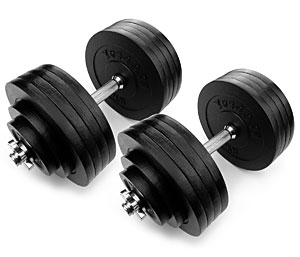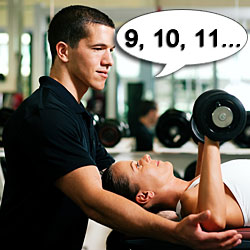- Like
- SHARE
- Digg
- Del
- Tumblr
- VKontakte
- Flattr
- Buffer
- Love This
- Save
- Odnoklassniki
- Meneame
- Blogger
- Amazon
- Yahoo Mail
- Gmail
- AOL
- Newsvine
- HackerNews
- Evernote
- MySpace
- Mail.ru
- Viadeo
- Line
- Comments
- Yummly
- SMS
- Viber
- Telegram
- JOIN
- Skype
- Facebook Messenger
- Kakao
- LiveJournal
- Yammer
- Edgar
- Fintel
- Mix
- Instapaper
- Copy Link
 When you think of a strong, fit individual, what kind of image comes to mind? Probably someone with a lot of definition in their arms and an ability to easily lift any weight they’re presented with.
When you think of a strong, fit individual, what kind of image comes to mind? Probably someone with a lot of definition in their arms and an ability to easily lift any weight they’re presented with.
If strong, toned arms are one of your fitness goals, it’s important to make sure you’re working your upper body correctly at the gym.
Read on for some guidelines that will help you structure the perfect upper body workout.
Understand Upper Body Movements
Once you’ve figured out your goals, it’s also important to understand the different ways in which the upper body can move. Knowing these different types of movement will help you make sure your upper body workout is comprehensive enough to help you get results.
The following are the six movement patterns of the upper body:
- Horizontal push: Any exercise that involves moving a weight in front of you so it travels horizontally away from the torso, such as a bench press.
- Horizontal pull: Any exercise that involves pulling a weight horizontally toward your torso, such as a row.
- Vertical push: Any exercise that involves pushing a weight vertically above your head, or in that general direction, such as an overhead press.
- Vertical pull: Any exercise that involves pulling a weight vertically down away from your head, such as a lat pull-down.
- Elbow flexion: Any exercise that involves flexing at the elbow to bring a weight toward your body, such as a biceps curl.
- Elbow extension: Any exercise that involves extending the elbow to move a weight away from you, such as a cable triceps press down.
Start with Compound Lifts
Generally speaking, it’s best to begin any workout, including your upper body workouts, with compound exercises. A compound exercise is one that utilizes multiple muscle groups.
Compound exercises for the upper body include:
- Bench press
- Overhead press
- Pull-ups
- Rows
There are lots of benefits that come with performing compound exercises first, including a greater calorie burn, improved coordination, improved mobility, and improved workout efficiency.
Once you’ve performed a few compound movements, you can move on to isolation exercises like biceps curls, triceps extensions, and lateral raises.
Use isolation exercises strategically to target areas of your body that you want to grow. The more volume you place in a particular area, the faster the muscle growth will be.
Use Free Weights Before Machines
 It’s also a good idea to start your workout with free weight (barbell or dumbbell) exercises before moving on to exercise machines.
It’s also a good idea to start your workout with free weight (barbell or dumbbell) exercises before moving on to exercise machines.
Free weights require extra stabilization, meaning they challenge your core muscles more. Because of the extra effort needed, it’s best to do free weight exercises at the beginning of your workout, when you have more energy and haven’t worn out your muscles.
Machines are better for isolation exercises since they only allow the body to move in one plane of motion at one time.
Determine Weight, Sets, and Reps
 Finally, determine the amount of weight you’ll lift and the number of sets and reps you’ll do during each upper body workout. The specific numbers you choose will vary based on your goals.
Finally, determine the amount of weight you’ll lift and the number of sets and reps you’ll do during each upper body workout. The specific numbers you choose will vary based on your goals.
Below are some basic guidelines to keep in mind for structuring your upper body workout:
- If you’re lifting light weights, go for a higher number of reps (15-20) to improve muscle endurance
- If you’re lifting moderately heavy weights, go for a moderate number of reps (8-12) to focus on muscle growth (hypertrophy)
- If you’re lifting heavy weights, go for fewer reps (4-6) to improve maximal muscle strength
Working Out on the Road
Don’t have access to a gym? That definitely doesn’t mean you have to sacrifice your fitness goals. It’s totally possible to achieve toned arms with resistance bands.
The following are some tips that can make your traveling or at-home upper body workouts more effective:
- Perform higher repetitions (20-30) since you’ll be using less weight than you would in a gym
- Move with control and focus on the mind-muscle connection
- Put compound movements before isolation movements, just like you would in the gym
You might also want to consider combining resistance bands with other pieces of portable workout gear, such as a suspension trainer or sliding discs.
